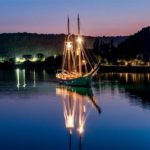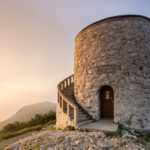Health resort medicine uses a variety of procedures or methods of application of natural healing factors, physical and rehabilitation factors, as well as those of other branches of medicine that are used to maintain and improve health, for prevention, treatment, extended treatment, recovery, and rehabilitation from various diseases in natural spas. Its development began more than two thousand years ago in natural healing places, where people were seeking health and healing of diseases.
Thermae was built in places with thermal water springs and curative muds, and elsewhere, and various methods of hydrotherapy, thermotherapy, mechanotherapy, and physical training were applied. In the Middle Ages, natural healing factors were infrequently used. Considerable momentum to reusing natural healing factors and to the development of healing medicine began in the 18th century and lasted for the next 200 years. In natural health resorts, medicine is developed, especially those sectors that deal with the diagnosis, treatment, and rehabilitation of disorders of the locomotor system, and of certain diseases of the respiratory, digestive, nervous and other systems and skin.
Nowadays, there are special hospitals for medical rehabilitation operating in traditional sea resorts and spas in Croatia, where thermal mineral waters and peloids, seawater and sea air are used as remedies. In addition, natural healing factors are also used in the tourism industry – the first tourist association in Croatia was established in Hvar in 1868, under the name of the Hygienic Society of Hvar.
Balneology and health medicine have a long tradition in Croatia. In 1940, the Balneological Council was established in Croatia, followed by the Balneological – climatological Institute at the Ministry of Public Health in 1949. Until 2008, the same building in Demetrova street hosted the Institute for Physical Medicine and Rehabilitation of the Medical Faculty of Zagreb University, closely related to the current development of balneological service in Croatia. Its distinguished members were Professor Stanko Miholić (1891-1960), dr. Leo Trauner (1893-1963), mr.ph. Renata Novak (1919-1993), Professor Oskar Plevko (1916-1965), Professor Veljko Mandić (1917-1992) and geology engineer Radovan Čepelak (1944). The tasks of the Institute were to collect, store and process data on the sites and places of application of natural healing factors in Croatia, to examine their composition regularly, to provide written expert opinions on their application and to encourage and promote the use of natural remedies in Croatian tourism and in medicine and in food, pharmaceutical, and cosmetic industries.

The Institute has conducted over 400 balneological analyses of mineral waters and curative muds in Croatia and in the region. Mr.ph. Renata Novak developed a classification of thermal and mineral waters and peloids, which is widely accepted nowadays. She also wrote hundreds of works, encyclopedic and other articles, and, together with other experts, has published a great number of professional and scientific papers. In order to further implement balneological services in Croatia, the foundation of the Institute for Balneoclimatology and health medicine has been proposed.
Since 2008, the balneological administration has been part of the Department for health ecology and industrial medicine at the School of National Health “Andrija Štampar” in Zagreb.
In order to ensure continuous use of natural remedies in Croatia activities are oriented towards the protection of sites and places where natural healing factors are used and towards the regular study of the composition of natural healing factors, as well as research and evaluation of beneficial effects of natural healing factors to a healthy and sick organism. It is also necessary to encourage the development of sanatoriums and health tourism facilities near the sites of natural healing factors and the use of natural healing factors in medicine, health care, and health tourism and in the food, pharmaceutical, and cosmetic industries.
Author: Goran Ivanišević M. Sc.
Photography: Goran Šafarek / www.visitzagorje.hr





